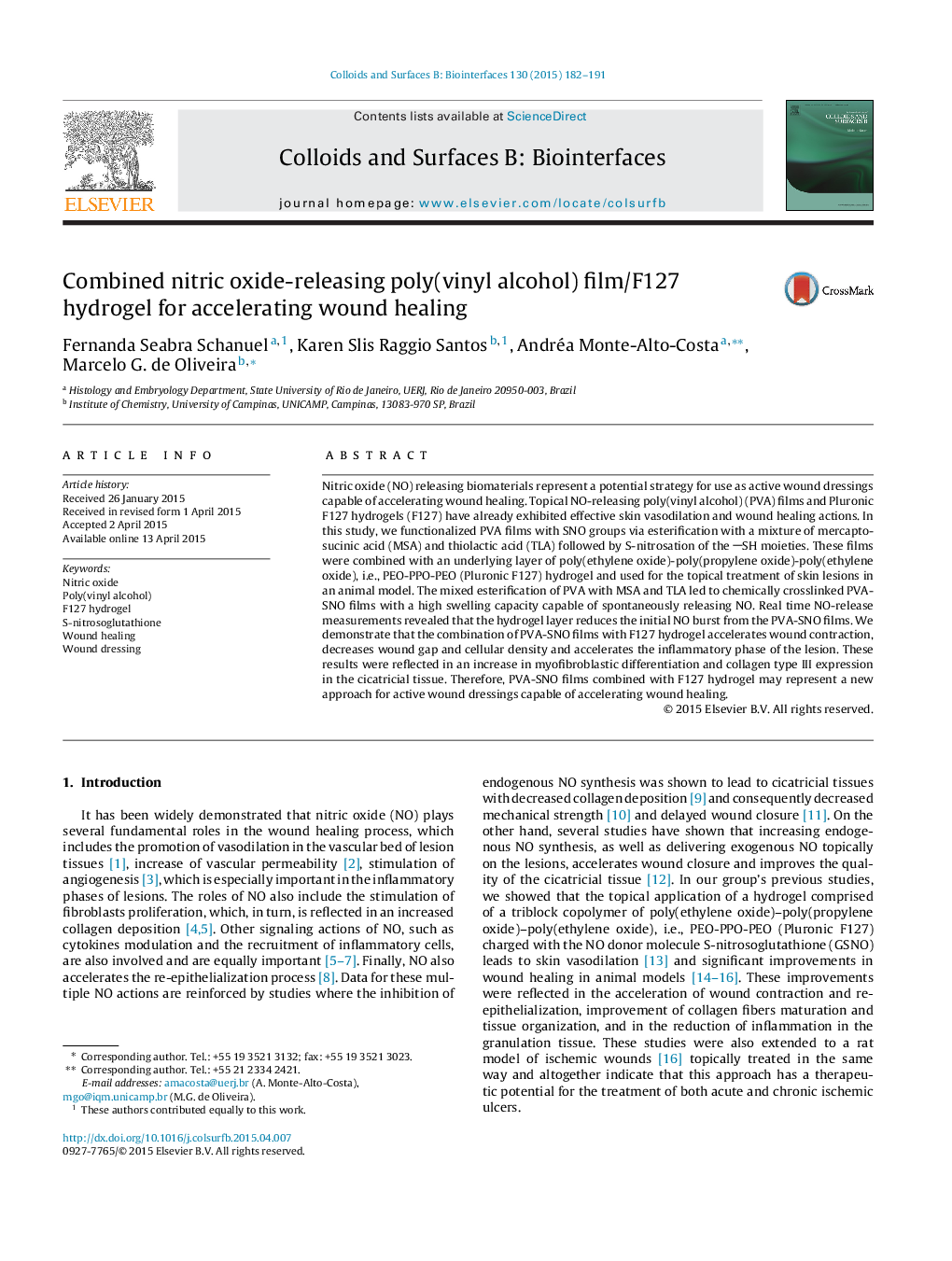| کد مقاله | کد نشریه | سال انتشار | مقاله انگلیسی | نسخه تمام متن |
|---|---|---|---|---|
| 599334 | 1454274 | 2015 | 10 صفحه PDF | دانلود رایگان |

• PVA films functionalized with nitric oxide releasing SNO groups were prepared.
• PVA-SNO films were combined with a layer of micellar Pluronic F127 hydrogel.
• Combined PVA-SNO films/F127 hydrogel reduced the rate of NO delivery to tissues.
• Topical application of PVA-SNO films/F127 hydrogel improved wound healing.
• A new approach for NO-releasing active wound dressings is proposed.
Nitric oxide (NO) releasing biomaterials represent a potential strategy for use as active wound dressings capable of accelerating wound healing. Topical NO-releasing poly(vinyl alcohol) (PVA) films and Pluronic F127 hydrogels (F127) have already exhibited effective skin vasodilation and wound healing actions. In this study, we functionalized PVA films with SNO groups via esterification with a mixture of mercaptosucinic acid (MSA) and thiolactic acid (TLA) followed by S-nitrosation of the SH moieties. These films were combined with an underlying layer of poly(ethylene oxide)-poly(propylene oxide)-poly(ethylene oxide), i.e., PEO-PPO-PEO (Pluronic F127) hydrogel and used for the topical treatment of skin lesions in an animal model. The mixed esterification of PVA with MSA and TLA led to chemically crosslinked PVA-SNO films with a high swelling capacity capable of spontaneously releasing NO. Real time NO-release measurements revealed that the hydrogel layer reduces the initial NO burst from the PVA-SNO films. We demonstrate that the combination of PVA-SNO films with F127 hydrogel accelerates wound contraction, decreases wound gap and cellular density and accelerates the inflammatory phase of the lesion. These results were reflected in an increase in myofibroblastic differentiation and collagen type III expression in the cicatricial tissue. Therefore, PVA-SNO films combined with F127 hydrogel may represent a new approach for active wound dressings capable of accelerating wound healing.
Figure optionsDownload as PowerPoint slide
Journal: Colloids and Surfaces B: Biointerfaces - Volume 130, 1 June 2015, Pages 182–191